FOUR FILMS FROM THE CENTRAL AUSTRALIAN
ABORIGINAL MEDIA ASSOCIATION (CAAMA)
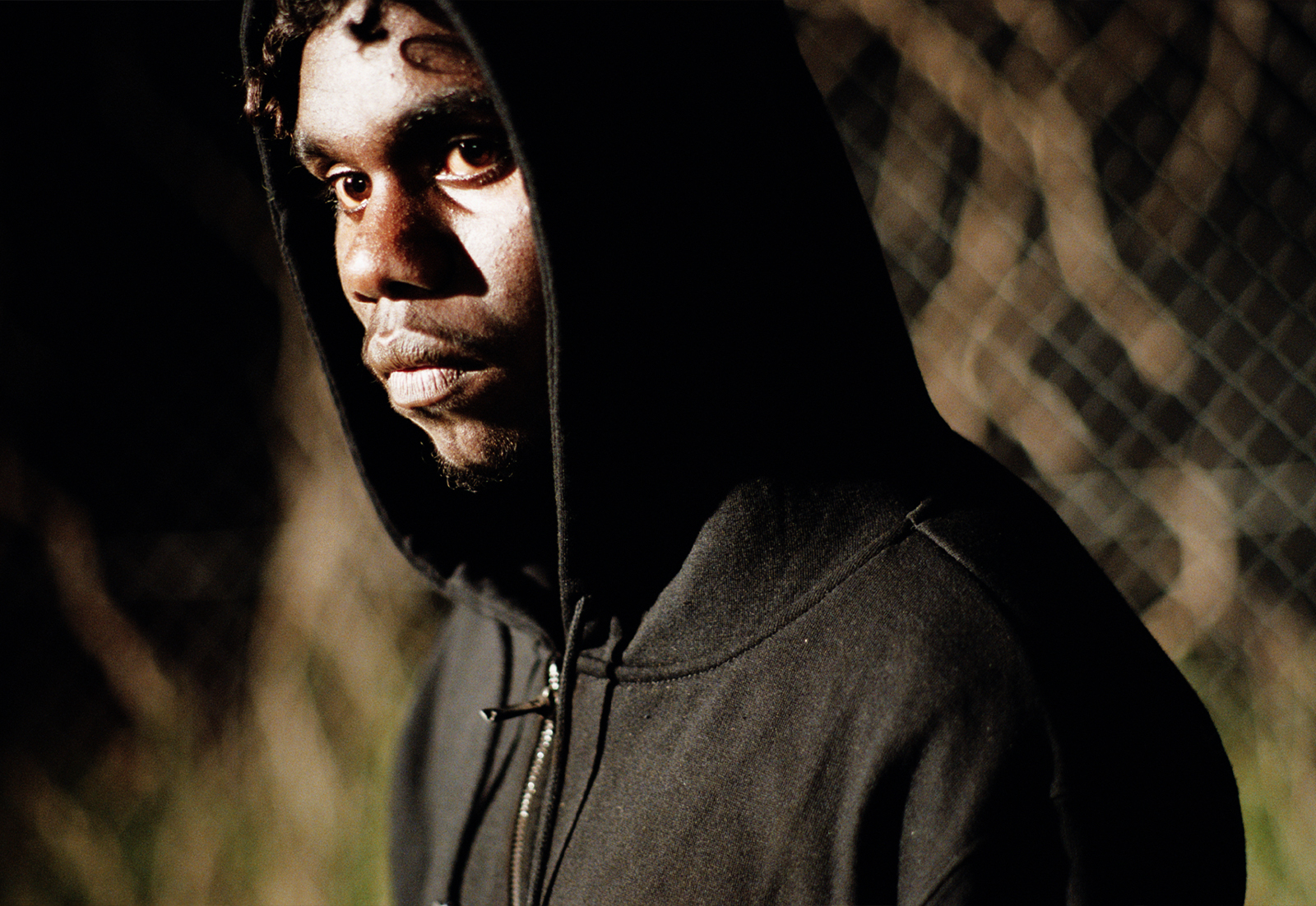

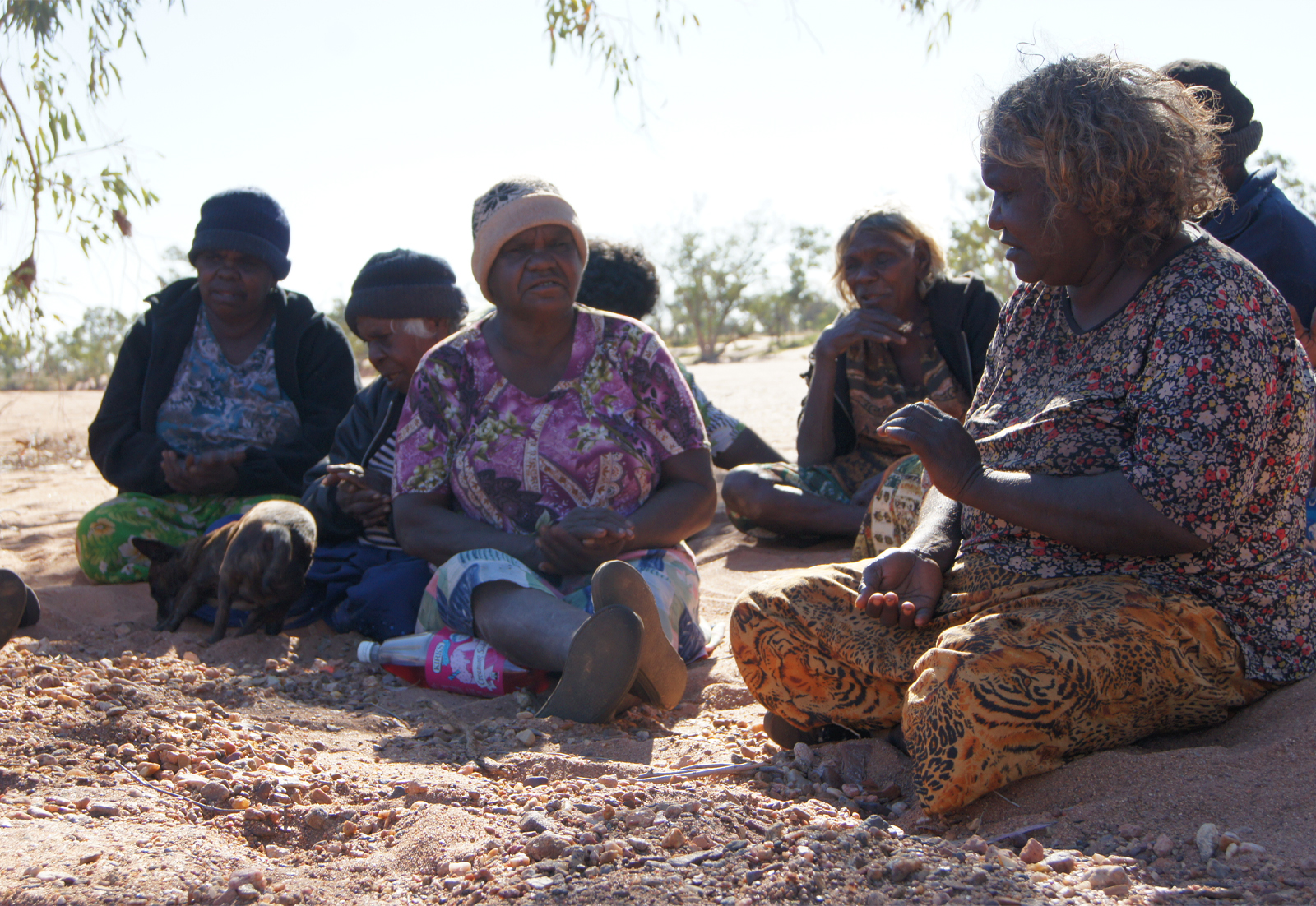
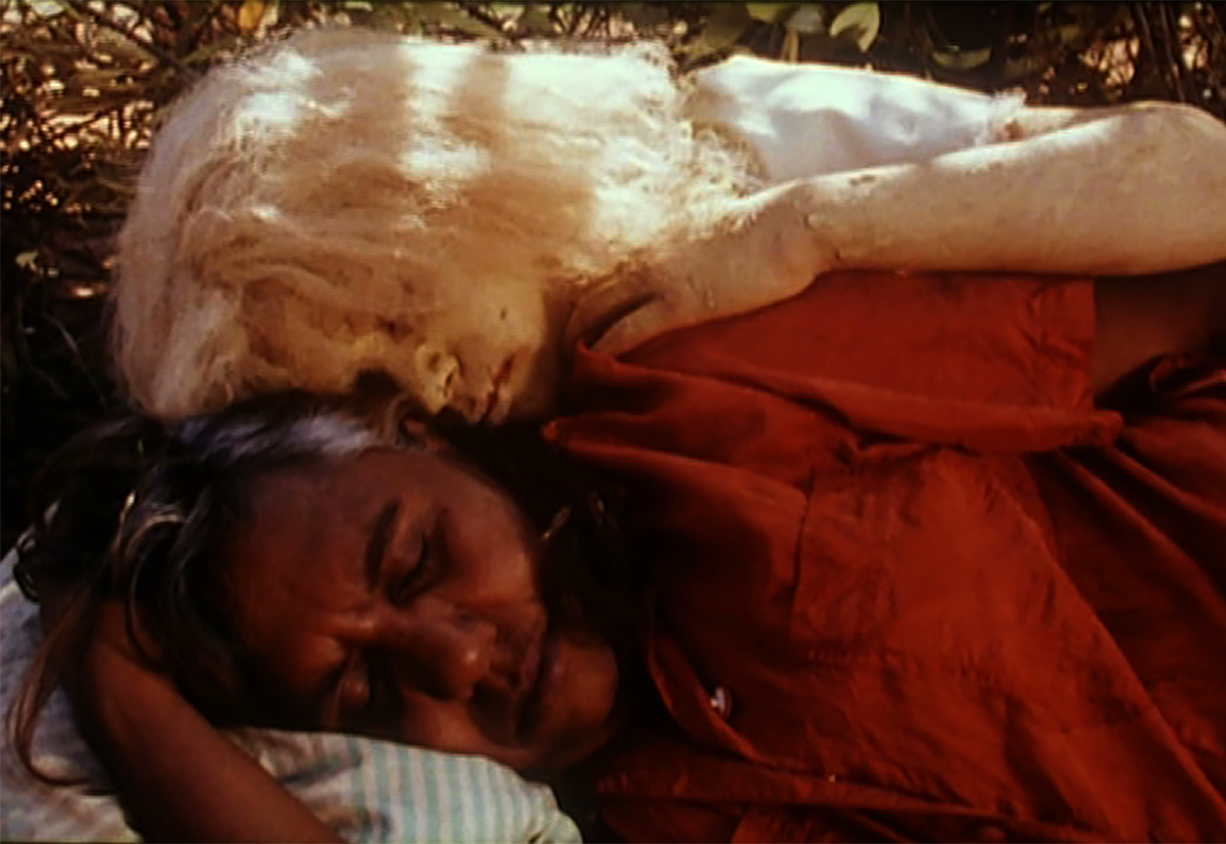
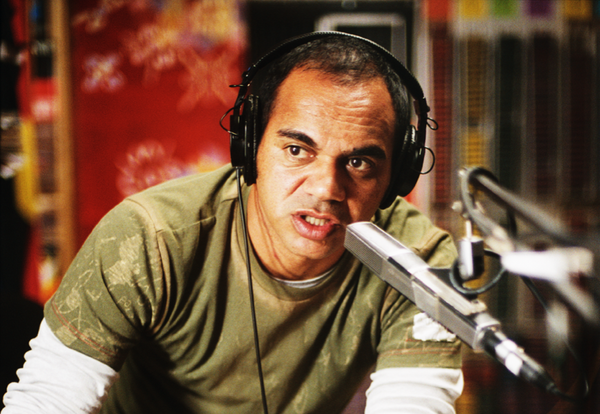
1:30 PM, Sunday October 17
Classic Cinemas, Elsternwick
Directors: Warwick Thornton, Dena Curtis, Danielle MacLean, David Tranter
Country: Australia
Runtime: 85 minutes
Language: English, Eastern Arrernte, Alywarre, with English subtitles
Format: Colour, Sound, HD Digital and 35mm (originally Digibeta, 35mm, 16mm)
Rating: MA15+
Tickets ⟶
Classic Cinemas, Elsternwick
Directors: Warwick Thornton, Dena Curtis, Danielle MacLean, David Tranter
Country: Australia
Runtime: 85 minutes
Language: English, Eastern Arrernte, Alywarre, with English subtitles
Format: Colour, Sound, HD Digital and 35mm (originally Digibeta, 35mm, 16mm)
Rating: MA15+
Tickets ⟶
Aboriginal and Torres Strait Islanders are advised that these films contain the images and voices of the deceased.
...............................................
Cinema Reborn will present a selection of four short films to pay homage to the work of CAAMA Productions, and to celebrate the Media Association’s powerful use of film and broadcast media to empower Indigenous voices and maintain and sustain Indigenous Language and Culture in Central Australia. The program will include Warwick Thornton’s award-winning short drama, Green Bush (2005), Dena Curtis’ observational documentary, Eight Ladies (2010), Danielle MacLean’s impressionistic drama, My Colour, Your Kind (1998) and David Tranter’s atmospheric documentary, Willaberta Jack (2007).
Bringing together two stunning dramatic short films, and two of the powerful documentaries produced for the Nganampa Anwernekenhe series, this program spotlights some of the many ground-breaking films from CAAMA Productions and its trailblazing filmmakers.
MY COLOUR, YOUR KIND | 1998 | Dir. Danielle MacLean | 11min | Colour | 16mm | English | Drama
In a sequence of simple, emotionally charged scenes, My Colour, Your Kind gives a powerful, impressionistic insight into the feelings of alienation experienced by a teenage albino Aboriginal girl. In a convent boarding school in Alice Springs, she is misunderstood and bullied by a severe, unloving nun. She escapes in dreams and eventually in reality to her mother where she feels at peace. (Ronin Films)
WILLABERTA JACK | 2007 | Dir. David Tranter | 26min | English and Alywarre [English Subtitles] | Documentary
The short film that was later expanded into a screenplay for award-winning feature film Sweet Country (2017), Willaberta Jack is the extraordinary story of the largest manhunt ever to take place in the Northern Territory. Set in 1929, Aboriginal man Willaberta Jack runs for his life, pursued by the law of the day. A riveting and atmospheric account of the harshness of outback life and of the perils of being a black man who challenged the white man’s dominance. (CAAMA and Ronin Films.)
EIGHT LADIES | 2010 | Dir. Dena Curtis | 22min | Colour | Alyawarr [English Subtitles] Documentary from the Nganampa Anwernekenhe series
Eight Ladies follows eight women from Alyawarr Country in the Sandover River region in central Australia on a five-day journey into the bush to hunt echidna and gather bush foods. As the women hunt together and sit around their campfire at night preparing the food, they talk about the old days and how life has changed. Filmed in an observational style, this gentle and reflective film is a moving revelation of the women's sense of relaxed oneness with their Country. (Ronin Films)
GREEN BUSH | 2005 | Dir. Warwick Thornton | 26 mins | Colour | English | 35mm | Drama |
Every night, Indigenous radio announcer and DJ, Kenny hosts the Green Bush show. Isolated at the station, he takes requests for music, while at the same time coping with the pressure of the community around him. Based on his own experiences as a radio DJ in Alice Springs in central Australia, Warwick Thornton made an international impact with this graceful and powerful short drama. (Ronin Films)
Source: Ronin Films
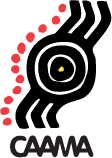
Notes By Phillip Batty:
![]() Freda Glynn. Kin, Wakefield Press.
Freda Glynn. Kin, Wakefield Press.
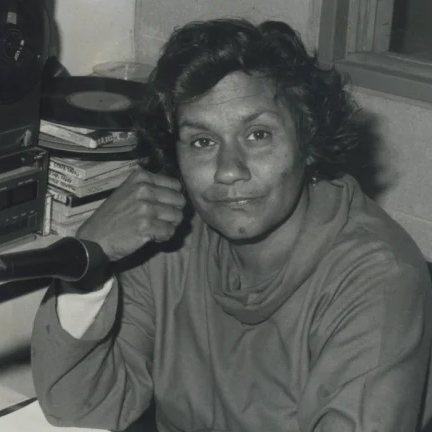 Freda Glynn. Kin, Wakefield Press.
Freda Glynn. Kin, Wakefield Press. Freda Glynn and the Evolution of CAAMA: A Personal Reflection
In the below extract from the book Kin: An Extraordinary Filmmaking Family published by Wakefield Press, co-founder of the Central Australian Aboriginal Media Association (CAAMA), Philip Batty, recalls the beginnings of CAAMA, and the significant role played by fellow co-founder Freda Glynn.
* * *
I first met Freda Glynn in 1979, at a demonstration in Alice Springs. At the time, Central Australia was a politically fractured place. The Whitlam Labor Government’s Land Rights Bill had inflamed pastoralists throughout the Northern Territory; the new Aboriginal Legal Aid service threatened the old local judicial system; bigoted police had come under investigation and missions had been abolished and their property handed over to Aboriginal organisations. In this fraught atmosphere it was not unusual to find oneself at demonstrations.
Eight months passed before I met Freda again; this time, at an event that would change both of us irrevocably. It was a tentative public meeting held in Alice Springs to discuss the formation of an organisation that proposed to work towards the establishment of an Aboriginal voice in the media.
The meeting was organised by me and a gregarious Aboriginal man from Oodnadatta, John Macumba. Our first few attempts to hold the meeting failed but on the third try, a number of Aboriginal people attended, including Freda, who voted with the majority to form a new organisation, tentatively named the Central Australian Aboriginal Media Association.
At the time, Freda was a single mother with five children: Sue, Erica, Scott, Robert and Warwick (then a ten-year-old boy). She had separated from her husband, Bob Thornton, and was cleaning hotels to support her family as sole breadwinner.
This made any full time involvement in CAAMA impossible. Although she attended CAAMA committee meetings and helped where she could, it would be another 18 months before Freda took up the position of co-director of the new organisation.
* * *
Freda was born on Woodgreen station, north of Alice Springs, in 1939. Her mother, Topsy Glynn, was a traditional Kaytetye woman who spoke several Aboriginal languages before English. Topsy received training at the station as a cook and subsequently worked for the owners.
Freda’s father, Alfred Price, was the son of Frederick Price, the second last postmaster of the Overland Telegraph Station in Alice Springs. Freda, or more correctly, Alfreda, was given the female version of her father’s name, Alfred. Freda’s only sibling, her older sister, Rona, was fathered by Alfred’s brother, Ronald.
As an infant, Freda was afflicted with a life-threatening illness and was sent, tucked up in a wooden egg box, to the ‘Bungalow’ (aka ‘The Half-caste Institution’) in Alice Springs to receive urgent medical care, accompanied by Rona and her mother. As Freda required prolonged care, her mother was allowed to stay at the Bungalow where she was later employed as housekeeper and head cook. Freda says that this was ‘the best thing that could have happened to me and my family’ as it opened up the possibility of education, employment and a better life in Alice Springs.
After leaving school in the mid-1950s, Freda was immediately offered training and a job at the only photographic studio in Alice Springs, and for 17 years she captured practically every baptism, wedding and birthday in the town. Working alone in the studio’s darkroom, Freda enjoyed listening to the ABC, then the only radio service available in Alice Springs. She says that this gave her a ‘great education’ about the world beyond the confines of Central Australia.
With the election of the federal Labor Government in 1972 and the creation of the first federal Department of Aboriginal Affairs (DAA), people like Freda were in demand. Employed by the Department in the mid-1970s, she received training in development management at the South Australian Institute of Technology in the Task Force program. She was subsequently offered work back in Alice Springs as a Community Development Officer, assisting people living on the town’s fringe camps.
It was during this period that I first met Freda.
* * *
In mid-February 1980, we presented a written submission to the Department of Aboriginal Affairs announcing the formation of CAAMA and seeking financial support. The Minister for Aboriginal Affairs in the Liberal Fraser Government, Fred Chaney, was receptive but felt that his colleague, Minster for Communications Tony Staley, should fund CAAMA.
While the ministers debated their respective responsibilities, the Institute for Aboriginal Development (IAD) in Alice Springs offered their support. They hired filmmaker Clive Scollay to organise a CAAMA media tour of public broadcasting stations in Canberra, Sydney and Melbourne and, more significantly, to arrange meetings with Chaney and Staley (then a Cabinet minister) to push CAAMA’s case.
Obligingly, the ministers agreed to meet the CAAMA delegation at Parliament House in early April. While Chaney was somewhat equivocal, offering little support for CAAMA, the opposite was true of Staley. When we entered his office, he said, with his feet on his ministerial desk, ‘The government would like to offer you a gift: the old ABC studios and broadcasting facilities in Alice Springs,’ and with that, he lit up a cigar. Stunned at such generosity, we thanked Staley and headed back to Alice Springs. In the meantime, he issued a press release notifying the public of his magnanimous offer. However, on inspecting the ‘studios’ we discovered that they were in a ruinous state and devoid of any equipment. Contact was immediately made with Staley’s office to alert him to the real state of the ‘gift’.
Six weeks later, on 28 May, Staley and Chaney flew to Alice Springs to speak with us. During this critically important meeting, it was resolved that the old studios would be renovated and production equipment installed for CAAMA’s use; that the new ABC studios and offices in Alice Springs would be made available to CAAMA while the renovations to the old studios were completed; and that DAA would consider funding CAAMA’s production and operational costs. I still find it surprising, if not astonishing, that a small, untested group from the desert was able to extract support from some of the most powerful political figures in the nation, including a Cabinet minister. Such, perhaps, was the goodwill that then existed towards Aboriginal people.
At about the same time, the federal government established a committee of inquiry into the ABC (the Dix Committee) and it happened to be holding a hearing in Alice Springs. This represented an unprecedented opportunity for CAAMA, then the only Aboriginal media organisation in the country. John delivered a powerful speech at the hearing, pointing out that the ABC was providing no Aboriginal programming in the country and that it must immediately rectify this ‘appalling oversight’. Two ABC executives present at the hearing – John Newsome and John Hartley – later recalled that John’s speech hit them ‘like a ton of bricks’.
Within a matter of months, CAAMA was contracted to produce radio programming on the local ABC outlet (8AL) and the ABC itself planned to launch its own pilot Aboriginal radio program through the same station and on a national basis. This had major repercussions for Freda. The ABC offered her training and a full-time position at the ABC producing and presenting their local program, which she accepted.
Much else was undertaken during this brief, hectic period: CAAMA played a role in establishing Alice Spring’s first public radio station, 8CCC; the first Indigenous media training programs were created; licence applications were submitted; radio programs were produced; building and equipment were installed; and much more. Indeed, from
January 1980 to June 1981, CAAMA went from nothing but an idea through to a burgeoning organisation, producing and broadcasting daily radio programming in four Aboriginal languages through three outlets: the public station, 8CCC, the regional ABC station, 8AL and the commercial station, 8HA.
In May 1981, John decided to leave CAAMA and Alice Springs. He had been offered a substantial managerial position that he could not refuse in his home town, Oodnadatta. I was concerned that if someone could not be found to replace John, CAAMA might falter. Fortunately, Freda, who was now employed full-time at the ABC but continued to attend CAAMA meetings, readily agreed to leave the ABC and take up the position of co-director, in July 1981.
A good start had been made in laying the foundations of CAAMA, but the work of turning it into an organisation with its own independent radio and television services, with a strong production capability and well-resourced training program was yet to be achieved.
One of our most important submissions at this time (presented to the federal government in 1983) focused on Australia’s forthcoming national satellite, AUSSAT, due to be launched in 1985. We pointed out in the submission that the satellite would, for the first time, make available a wide range of telecommunication services, including TV, to hundreds of remote Aboriginal communities. We insisted that these communities should be afforded some measure of control over what we described as the ‘avalanche’ of television about to pour into their homes. We also argued that Aboriginal people should be given the ability to produce television programming on their own terms and in their own languages as a way of moderating this forthcoming ‘cultural televisual dominance’.
To back up these arguments, Freda and I attended a number of conferences and seminars in the southern capitals where Freda made impassioned speeches about the potential impact of the satellite. At this point, the federal government was still making up its mind about how AUSSAT would be regulated and who would have access to it.
Our arguments concerning the need for Aboriginal production of Aboriginal programming in the face of the impending satellite were also put to the Australian Film Commission (AFC). Responding positively, the AFC, then headed up by Cathy Robinson, and later Kim Williams, provided CAAMA with enough funding to establish the CAAMA Video Unit at the end of 1983 (later, CAAMA Productions Pty Ltd). Clive Scollay was re-engaged to set up the Unit with four Aboriginal trainees. While technically ‘trainees’, they were thrown into intensive production work, including a number of contracts for government departments. One of the trainees was Erica Glynn.
Moves were also made in 1983 to establish CAAMA’s own independent radio broadcasting network. A detailed application was made late that year to the Australian Broadcasting Tribunal (ABT) for a licence to operate a public radio station in Alice Springs with repeaters at the Aboriginal communities of Hermannsburg, Ali Curung and Santa Teresa. A year later, the ABT convened a public hearing in Alice Springs at which Aboriginal organisations and people throughout the Northern Territory came to speak in support of the application, including Pat Dodson, then director of the Central Land Council. After a brief deliberation, the ABT officially awarded CAAMA its long-awaited broadcasting licence in September 1984; the first ever awarded to an Aboriginal organisation. In making its decision, the chairman of the ABT, David Jones, said it was ‘an historic occasion in Australian broadcasting’.
The new station was located in Little Sisters, a renovated former Catholic convent on the southern outskirts of Alice Springs, next to a town camp, also named Little Sisters, which could sometimes become extremely rowdy. On occasion, when one of the radio announcers failed to turn up, Freda would grab her teenage son Warwick to fill in. This experience later formed the basis of Warwick’s award-winning short, Green Bush (2005).
The old convent also accommodated the CAAMA video unit, audio-visual library, administrative offices and other facilities. In 1984, a recording studio was constructed next to the convent and a recording label, CAAMA Music, created. Within three years the label had grown into a substantial business, selling more than 30,000 cassettes and CDs annually, from a catalogue of some 40 albums. The recording studio was managed by music producer Bill Davis, working with Aboriginal trainees including Mark Manolis, who later found work in the recording industry. Bill and his team later produced a series of award-winning radio programs for schools located in Aboriginal communities throughout the Northern Territory known as Bushfire Radio.
In 1984, the federal government finally made a decision about who would have access to the national satellite, AUSSAT. Briefly, Minister for Communications Michael Duffy decided that licences would only be granted to commercial television operators to provide services from the satellite. Further, the Australian Broadcasting Tribunal would decide who was to be awarded these licences through a competitive process after public hearings. If anyone else wanted access to the satellite, they would have to negotiate with the successful licensees.
This meant that community-based bodies like CAAMA would have to beg these commercial operators for access with no guarantee of success. It seemed, at the time, as if we were completely locked out. There was however one small chink in this seemingly impenetrable armour. CAAMA could create its own commercial TV company and bid for one of the licences in its own right and thus obtain unfettered access. Indeed, one of the satellite’s service areas covered all of those towns and regions that CAAMA had always wished to reach.
This created a huge dilemma. CAAMA had no interest in operating a commercial TV service, but if it did not submit a licence application, it would have no guaranteed access to the satellite. I remember having long, anxious discussions with Freda and the CAAMA committee about whether to apply for the licence. We would have to broadcast predominantly commercial television programming, yet CAAMA was established to counter such material. In short, we would be forced to sup with the devil. In the end, we decided to apply for the licence as there was no alternative.
We created, on paper, a television company, Imparja (meaning ‘track’ in the Arrernte language) to facilitate the bid. One small problem remained, however: CAAMA had no money to actually establish the service. Freda and I conducted a tour of Indigenous television satellite services in North America. In Canada, we visited the remote Arctic Circle, where satellite technology had been delivering TV programming in the Inuit language for many years. Here, we were warmly welcomed by representatives of the Inuit Broadcasting Corporation who offered to appear at the hearing (via satellite) in support our application.
The first hearing was held on 6 August 1985 in Alice Springs. Two contenders had applied for the licence, CAAMA and the Darwin-based commercial TV station, Channel 8, which was acquired in the middle of the hearing by media magnate and Australia’s richest man, Kerry Packer. We had 24 Aboriginal and non-Aboriginal witnesses to support our case, including eye surgeon, Fred Hollows; the former head of the reserve bank, H.C. ‘Nugget’ Coombs; Minister for Education in the South Australian government, Lynn Arnold, (later premier of that state); Rosemarie Kuptana, head of the Inuit Broadcasting Corporation (via satellite); and many Aboriginal community representatives.
While we were able to put forward a convincing case in terms of our Aboriginal programming and special audience needs, we did not of course have experience in operating a television station. More problematically, we had been unable to secure financial support, despite several funding submissions to the federal government. In sharp contrast, Channel 8 had the required funds and the technical experience. They planned to relay their existing commercial television material through the new satellite service, together with some local news, but there would be no programming for the substantial Aboriginal audience.
Freda and I held out little hope of winning the bid. In fact, our whole team did. We were therefore astonished when the ABT decided that neither CAAMA nor Channel 8 qualified for the licence and that another hearing would be called to decide the matter. In short, CAAMA had ‘impressive’ programming, but zero finance, while Channel 8 possessed the finance, but no Aboriginal programming. The next hearing was set down for 17 March 1986, giving both parties six months to re-boot their applications. As the communications academic Eric Michaels suggested, the ABT sent both applicants on a ‘treasure hunt’: ‘CAAMA had to come back with six million dollars’, while Channel 8 had ‘to find some Aboriginal content’.
With the real prospect of winning the licence, Freda, myself and other CAAMA staff (including ‘Shorty’ O’Neil, formerly of the North Queensland Land Council), organised an intensive round of new meetings with government funding bodies. In the end, we were able to obtain an undertaking that if CAAMA won the licence, the funds would be forthcoming, subject to ministerial approval.
About 30% of this money was to come from the Australian Bicentennial Authority, which had been established to celebrate, in 1988, the 200th anniversary of European settlement in Australia. The Authority had substantial funding for ‘nationally focused’ Aboriginal projects and an Aboriginal-owned satellite television service appeared to fit the bill. Some city-based Aboriginal groups protested against CAAMA accepting the bicentennial ‘blood money’ and, on several occasions, Freda fronted up to these groups to argue that all government funding to Aboriginal organisations could be described as ‘blood money’. Indeed, at a particularly hostile meeting, I remember thinking back to the first time I met Freda when she was confronted by the all-white Citizens for Civilised Living. On this occasion, it was an all-Aboriginal crowd she faced with the same bravery.
Following the second, tumultuous hearing, the ABT awarded the licence to CAAMA in August 1986, stating that ‘on balance’, CAAMA could provide a more ‘comprehensive’ service. Channel 8 had made some limited attempt to develop Aboriginal programming but it failed to impress the ABT. Miraculously, once we had secured the license, the funding bodies made good on their promise to provide the required $6 million funds. The decision produced a near hysterical response from the conservative Northern Territory Government. As recorded in Hansard, Chief Minister Ian Tuxworth thundered, ‘This is a joke … giving a television signal that covers one-third of the Australian continent to a group … that is incapable, incompetent and unfinancial (sic), is madness.’ Channel 8 launched an appeal against the decision, but that too failed. By the end of 1986, CAAMA was ready to build its own satellite service, Imparja Television.
* * *
Along with the licence came $3.5 million in promised funding to train over 30 Aboriginal ‘media cadets’ in association with the Australian Film Television and Radio School, to be coordinated by the School’s Julie Wiggins. Two of these trainees were Warwick Thornton and Rachel Perkins.
One could say that Warwick grew up with CAAMA. Indeed, Freda used to refer to him and his sister Erica as her ‘CAAMA babies’. As a 12-year-old, Warwick could often be found riding his BMX bike around the CAAMA radio studios, pestering his mother. As we have seen, his initial role at CAAMA was that of a ‘fill-in’ radio announcer, up until he had his own program. When he took up one of the new traineeships after the license victory, he received on-the-job training, using the CAAMA video unit’s new camera equipment. It was clear from the outset that he had a particularly acute ‘eye’ and aesthetic sensibility, which would lead him onto a successful career. Rachel Perkins had grown up in the southern cities, but she too had close ties with Central Australia. Her famous activist father, Charlie Perkins, was born in the region and, like Freda, had spent time as a child at the Bungalow home in Alice Springs.
Rachel had quite different interests to Warwick. When I first met her, she was halfway through a Dostoevsky novel and already talking about films she planned to make. My immediate thought was, this young woman will go far.
With the training program underway, work began on the establishment of Imparja TV, and after a frantic 12 months or so, Imparja went to air on 15 January 1988.
Rachel’s father, then head of the Aboriginal Development Commission, officially launched the station before a crowd of some 500 guests. In a subsequent press interview, Freda said: ‘After all the hard work, this is a proud moment for our mob.’ And, indeed, it was.
This is an edited extract from Philip Batty’s essay ‘Freda Glynn and the evolution of CAAMA: a personal reflection’, in Kin: An extraordinary Australian filmmaking family (Wakefield Press).

